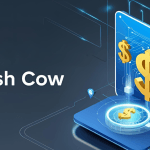
Harnessing the Hidden Power of Pinterest: From Pins to Profits
Pinterest isn’t just for inspiration—it’s a goldmine for entrepreneurs willing to think creatively. Let’s delve into how a casual user turned Pinterest into a monthly revenue stream worth thousands, all starting with a single pin.
Unlocking the Pinterest Potential: More than Just Pretty Pins
When people think of Pinterest, they often imagine a digital scrapbook filled with pretty pictures and DIY projects. But what if I told you that a single pin could be making you hundreds of dollars every single month? Yes, you heard that right. Pinterest is not just a platform for inspiration; it’s a powerful tool for driving free traffic and boosting your business.
Exploring the Vast User Base
With a staggering 450 million users accessing Pinterest every month, the platform offers a massive audience for businesses to tap into. This isn’t just any audience, though. It’s a highly engaged one, always on the lookout for new ideas and products. Imagine having access to such a vast pool of potential customers without spending a dime on ads. Sounds like a dream, right?
But how does Pinterest manage to drive so much free traffic? The answer lies in its unique structure. Unlike other social media platforms, Pinterest functions more like a search engine. Users actively search for content, which means they are already interested in what they find. This intent-driven traffic can be incredibly valuable for businesses looking to convert views into sales.
Understanding the Target Demographic
Now, let’s talk about the people behind those 450 million monthly visits. A whopping 76% of Pinterest users are women. This demographic insight is crucial for businesses aiming to engage a primarily female audience. Whether you’re selling fashion, beauty products, or home decor, Pinterest is the place to be.
Why is this significant? Well, women are often the primary decision-makers when it comes to household purchases. By targeting this demographic, businesses can tailor their marketing strategies to meet the needs and preferences of female consumers. It’s like having a direct line to your ideal customer base.
Pinterest: A Top Tool for Non-Influencer Marketing
Not everyone wants to be a social media influencer. Some people prefer to keep their faces off the internet, and that’s perfectly okay. The good news is, you don’t need to be an influencer to succeed on Pinterest. The platform provides significant free traffic without requiring you to have a large following or influencer status.
In fact, Pinterest is one of the best free traffic methods available today. It’s a place where content, not personality, takes center stage. This means that anyone, regardless of their online presence, can leverage Pinterest to drive traffic to their website or online store.
Pinterest boasts one of the largest free traffic arenas with its massive female audience.
So, how can you make the most of this opportunity? Start by understanding how Pinterest works. It’s all about creating visually appealing pins that capture attention and encourage clicks. Use keywords strategically to ensure your content appears in relevant searches. And don’t forget to include links to your website or product pages. After all, the goal is to convert those clicks into sales.
Conclusion
In conclusion, Pinterest is more than just a platform for pretty pins. It’s a powerful marketing tool that can drive free traffic to your business. With its vast user base and predominantly female audience, Pinterest offers a unique opportunity for businesses to reach their target demographic without the need for influencer status. So, why not unlock the potential of Pinterest and see how it can benefit your business?
Strategies for Affiliate Success: Monetizing Your Pins
Selecting the Right Niche
Choosing the right niche is the cornerstone of success on Pinterest. But why is it so crucial? Well, imagine trying to sell snow gear in the desert. Doesn’t make much sense, does it? Similarly, picking a niche that aligns with Pinterest’s user base can make all the difference. Over 76% of Pinterest users are female, so focusing on female-dominated niches like fashion, skincare, or even interior design can be a game-changer. These niches not only attract a specific audience but also lend themselves to visually appealing content, which is key on a photo-based platform like Pinterest.
Start with a niche you love and connect with affiliate programs that complement your interests. This approach not only makes the process enjoyable but also ensures authenticity in your promotions. Whether it’s fashion, skincare, or home decor, the important thing is to get started. Don’t overthink it; you can always rebrand later.
Signing Up for Affiliate Programs
Once you’ve nailed down your niche, the next step is to sign up for affiliate programs that align with it. This is where the magic happens. By promoting products that resonate with your audience, you increase the likelihood of conversions. But how do you find these programs? A quick Google search for “best affiliate programs in [your niche]” will yield a plethora of options.
For beginners, the Amazon Partner Program is highly recommended. It’s a trusted marketplace with a vast range of products, making it a must-have in your affiliate arsenal. Other platforms like Impact Radius and Awin also offer a wide array of products across various niches. Signing up is a breeze—just provide your name, email, and a few details about yourself, and you’re good to go.
Using High-Conversion Pin Styles
Now that you’ve got your niche and affiliate programs sorted, it’s time to focus on pin styles. On Pinterest, aesthetics are everything. High-conversion pin styles can significantly boost engagement and sales. But what makes a pin high-conversion? It’s all about the visuals. Think of your pins as mini-billboards. They need to be eye-catching and informative.
Consider creating bundle pins that showcase complementary products. For instance, if you’re in the skincare niche, you could create a pin featuring a cleanser, toner, and moisturizer. This not only encourages purchases but also increases conversions by offering a complete solution to your audience.
Remember, Pinterest is a visual platform. The most successful products are often those that are aesthetically pleasing. So, focus on creating pins that are not only informative but also visually stunning. This approach can make a significant difference in your affiliate marketing success.
Final Thoughts
In the world of Pinterest affiliate marketing, the right niche, affiliate programs, and pin styles are your trifecta for success. By focusing on these key areas, you can effectively monetize your pins and turn your Pinterest account into a revenue-generating machine. So, what are you waiting for? Dive into the world of Pinterest affiliate marketing and start seeing the results you’ve been dreaming of.
“Start with a niche you love and connect with affiliate programs that complement your interests.”
By following these strategies, you can position yourself for success in the competitive world of affiliate marketing on Pinterest. Whether you’re just starting or looking to optimize your current strategy, these tips can help you achieve your goals and maximize your earnings.
Crafting the Perfect Pin: Design and Distribution
In the world of Pinterest, where visuals reign supreme, crafting the perfect pin is both an art and a science. It’s not just about creating something pretty; it’s about designing a pin that captivates, engages, and converts. How does one achieve this? Let’s dive into the essentials of pin design and distribution.
Eye-Catching Designs with Canva
First things first: the design. A pin must be visually appealing to stand out in a sea of content. Canva, a free and user-friendly design tool, is a game-changer here. Even for those who aren’t artistically inclined, Canva offers a plethora of templates that are already optimized for Pinterest’s preferred dimensions. This means you can focus on creativity without worrying about technicalities.
When designing, think about what catches your eye. Is it bold colors, striking fonts, or perhaps a clever layout? Use these elements to your advantage. Remember, the goal is to stop the scroll. A well-designed pin can make someone pause and take notice, which is the first step towards engagement.
Subtle Integration of Affiliate Links
Once the design is set, it’s time to think about monetization. Affiliate links can be a powerful tool, but they must be integrated subtly. No one likes a hard sell. Instead, weave these links into the pin description naturally. For instance, if your pin showcases a stunning outfit, the description could guide viewers to where they can purchase each piece.
It’s important to maintain transparency while also enticing the viewer. A well-crafted description not only informs but also persuades. Use keywords strategically to enhance SEO, ensuring your pin is easily searchable. As one expert puts it,
The key to Pinterest success is in the details — from design to daily engagement.
Consistency is Key
Design and content are crucial, but they mean little without consistency. Posting multiple pins daily is essential to maintain visibility and engagement. Think of it like watering a plant; regular attention helps it grow. The same goes for your Pinterest presence. Consistent posting keeps your content fresh and your audience engaged.
But why is consistency so important? Simply put, the Pinterest algorithm favors active accounts. The more you post, the more likely your pins are to be seen. This increased visibility can lead to more clicks, more engagement, and ultimately, more conversions. It’s a simple yet effective strategy.
High-Quality Visuals and Strategic Tagging
Beyond design and posting frequency, the quality of your visuals and the strategy behind your tags play a significant role. High-quality images are non-negotiable. Blurry or pixelated images can undermine even the best designs. Invest time in sourcing or creating high-resolution visuals that do justice to your content.
Strategic tagging is another layer of the puzzle. Tags help categorize your pins, making them easier to find. Use relevant keywords that align with your niche. If someone searches for “women’s streetwear,” your pin should be among the top results. This is where SEO comes into play. Utilize tools like ChatGPT to craft SEO-optimized descriptions that enhance discoverability.
Conclusion
In conclusion, crafting the perfect pin is about more than just aesthetics. It’s about creating a cohesive strategy that combines eye-catching design, subtle monetization, and consistent engagement. By leveraging tools like Canva, integrating affiliate links thoughtfully, and maintaining a steady posting schedule, one can significantly enhance their Pinterest presence.
Remember, success on Pinterest is in the details. From the initial design to the final post, every step counts. As the saying goes, “The key to Pinterest success is in the details — from design to daily engagement.” Embrace these details, and watch your Pinterest strategy flourish.
TL;DR: Pinterest offers a unique opportunity for passive income through creative strategies and affiliate marketing. With the right techniques, your pins can become powerful tools for generating substantial revenue.
















